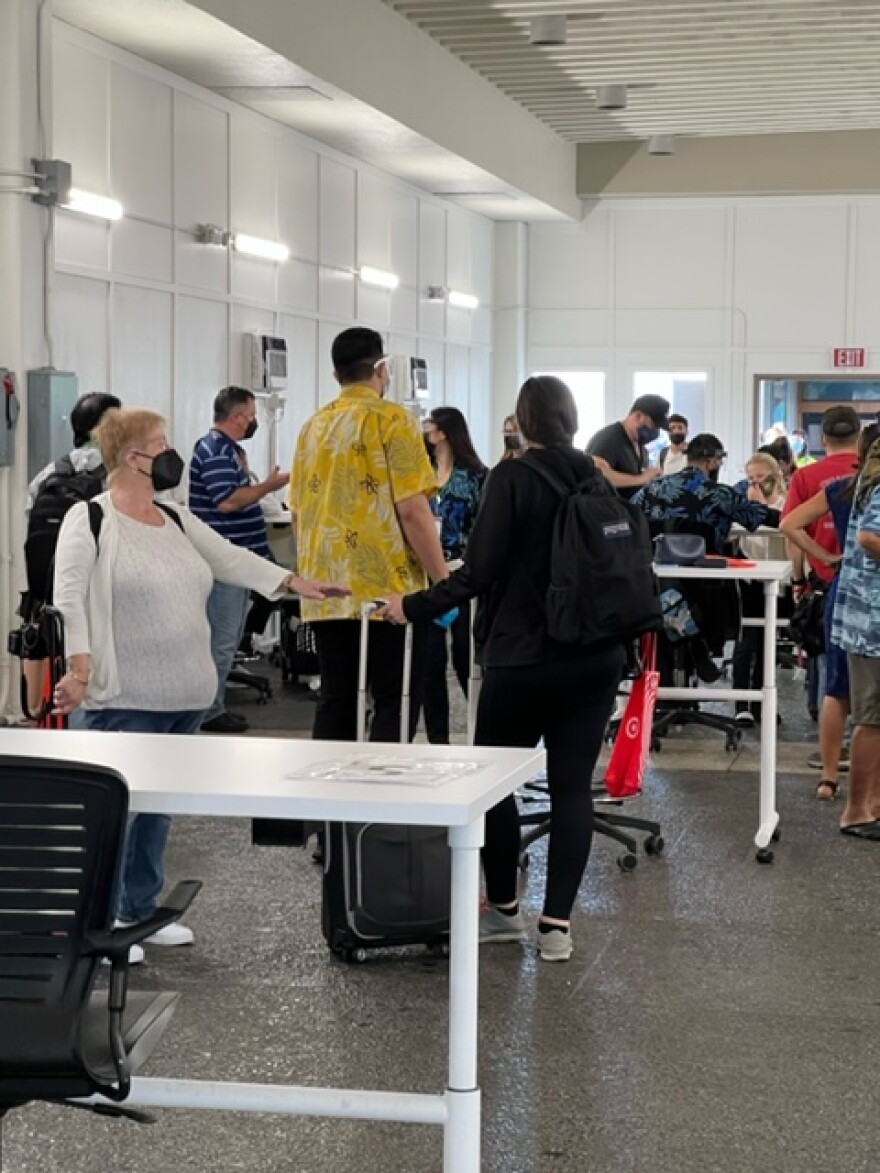It was three years ago this week that the Department of Health announced the first case of COVID-19 in Hawaiʻi. Before the month was out, a stay-at-home order and travel restrictions were put in place.
We're taking a look back with our partners at the Center for Oral History at the University of Hawaiʻi. Ethnic studies professor Ethan Caldwell introduces the speakers.
Hawaiʻi was one of the first states to declare a state of emergency after the first case of COVID-19 arrived on March 6, 2020. The governor suspended travel and instituted stay-at-home orders before the month was out.
Until reopening in October 2020, Hawaiʻi was a model of containment compared to other states that reopened too soon, where deadly surges ensued. The counties followed state directives and instituted their own responses to mitigate the initial spread of the virus. Former Hawaiʻi County Mayor Harry Kim recalls his response.
KIM: None of us wanted to go and arrest people and cite people, you know. So we emphasized at the beginning, education and just talk to them so that they understand. A person was called in, a person violating facemasks. Police officer approached him and said, hey, you know, and literally gave him a face mask because every officer car carries facemasks, cause we were so lucky. We donated hundreds of thousands of facemasks. We can do that. And the very next day, the Police Department was called at the same place, same violation, same person and said, hey, you know, an arrogance of no, I don't have to wear one. And she had to be arrested. And arrest means taken to jail until your bail is set or whatever. And nobody wants to do that. But it's a hard thing to change our lifestyle. And this is why this is difficult. Do we want to give them a citation because they are hugging? You got to be a Frankenstein to enjoy that.
Predicting the spread of the virus was complicated by our island setting. While Hawaiʻi's insularity protected us at first, the virus coursed through the islands quickly once it took hold. John A. Burns Medical School professor and epidemiologist Thomas Lee took the lead in adapting models from other regions to our island setting.
His predictions were crucial to Gov. David Ige’s response and the relatively successful containment of COVID-19 before the state reopened travel.

LEE: It was close to the end of June when there was talk about reopening up travel, the economy, with what is now known as the Safe Travels program because the case counts are so low and some days there was zero new cases. But what I was looking at was Hawaiʻi is never in a bubble. We are never in a vacuum. What was going on internationally? What was going on nationally? What were the historical trends? And at the time, Europe and then parts of the mainland were experiencing that second surge. And I knew it was a matter of time, and by opening up without having a strong, Safe Travels plan in place, we’re just asking for a real big surge without being prepared. We were able to factor in impacts of travel and accounting for age and also all sorts of metrics. What we were showing was even a reasonable worst-case scenario and a most likely scenario, we would reach ICU capacity within a couple of months if we opened up based on what was going on in the mainland. They made the decision not to open up. What would Hawaiʻi experience if we had opened up and we had that surge? It most likely would have been at least two, if not three times greater in magnitude than if we didn’t. We truly mitigated a big surge just by not opening up.
———
This oral history project is supported by the SHARP initiative of the National Endowment for the Humanities through the American Council of Learned Societies.






